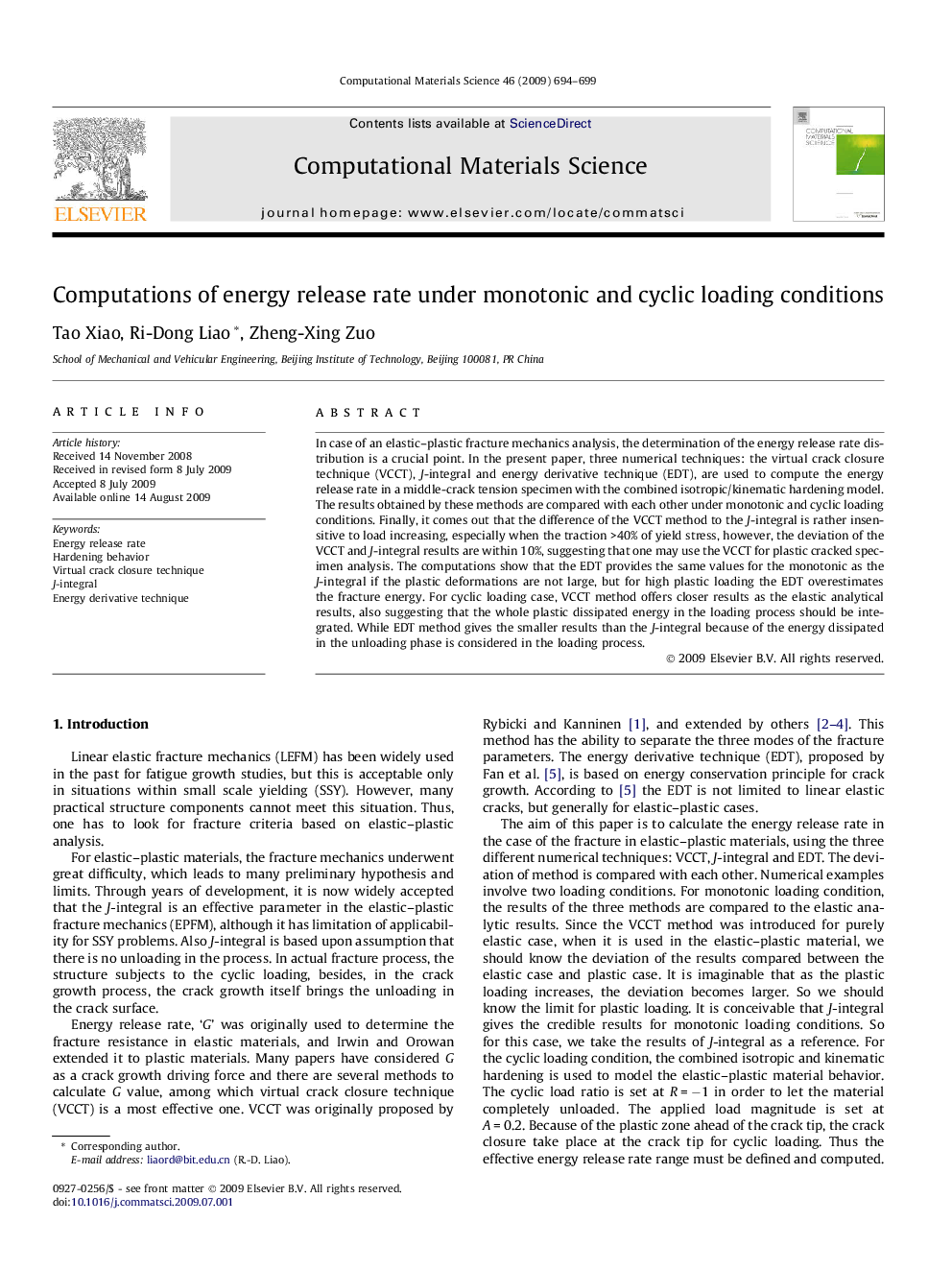| Article ID | Journal | Published Year | Pages | File Type |
|---|---|---|---|---|
| 1563099 | Computational Materials Science | 2009 | 6 Pages |
In case of an elastic–plastic fracture mechanics analysis, the determination of the energy release rate distribution is a crucial point. In the present paper, three numerical techniques: the virtual crack closure technique (VCCT), J-integral and energy derivative technique (EDT), are used to compute the energy release rate in a middle-crack tension specimen with the combined isotropic/kinematic hardening model. The results obtained by these methods are compared with each other under monotonic and cyclic loading conditions. Finally, it comes out that the difference of the VCCT method to the J-integral is rather insensitive to load increasing, especially when the traction >40% of yield stress, however, the deviation of the VCCT and J-integral results are within 10%, suggesting that one may use the VCCT for plastic cracked specimen analysis. The computations show that the EDT provides the same values for the monotonic as the J-integral if the plastic deformations are not large, but for high plastic loading the EDT overestimates the fracture energy. For cyclic loading case, VCCT method offers closer results as the elastic analytical results, also suggesting that the whole plastic dissipated energy in the loading process should be integrated. While EDT method gives the smaller results than the J-integral because of the energy dissipated in the unloading phase is considered in the loading process.
